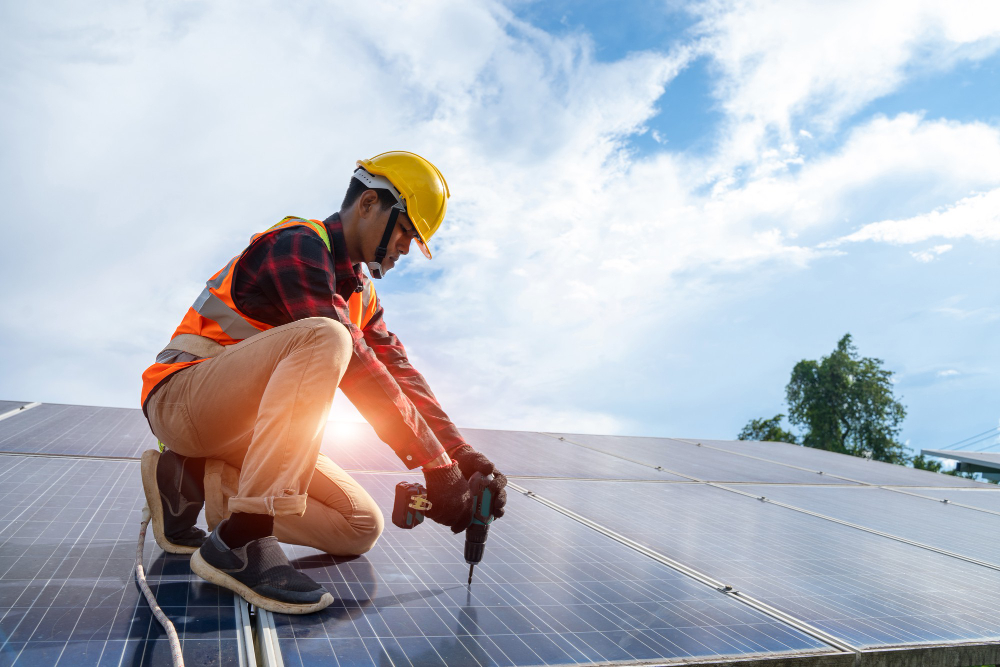Last updated on
Roofing plays an essential role in protecting our homes and buildings, but did you know that it also has a significant impact on the environment?
The traditional roofing materials and methods used can have adverse effects on our planet, from harmful emissions during production to landfill waste when old roofs are replaced. However, with sustainability becoming a top priority globally, eco-friendly roofing solutions are gaining traction.
In this blog post, we will walk you through six steps to achieve sustainable roofing excellence, from choosing the right materials to proper maintenance practices. Let’s dive in and learn how we can contribute to a greener future while protecting our own properties.
Choose Environmentally-friendly Materials

When it comes to sustainable roofing, the first step is choosing environmentally-friendly materials. Traditionally, asphalt shingles have been the go-to option for roofs, but they are not a sustainable choice due to their short lifespan and non-biodegradable nature. Instead, consider using materials such as metal or slate that can last for decades and are recyclable at the end of their lifespan.
Another option is using reclaimed or recycled materials, such as rubber, plastic, or wood shingles. These materials not only reduce the environmental impact but also add a unique aesthetic to your property. Additionally, look for products with energy-efficient features and certifications from organizations like ENERGY STAR.
Work With a Certified Roofing Contractor
Once you have selected the right materials, it is crucial to work with a certified roofing contractor. As highlighted by the team at ODonnellRoofingCo.com, a professional and experienced contractor will not only ensure proper installation but also guide you toward more sustainable options. They can advise on the best materials for your specific climate and provide insights on energy-efficient techniques to reduce your carbon footprint.
Additionally, working with a certified contractor can also make you eligible for tax credits and incentives aimed at promoting sustainable roofing practices. Ensure to check for certifications and references before hiring a contractor for your roofing project.
Consider Energy-efficient Options

Energy efficiency is a crucial aspect of sustainable roofing, and there are various options you can consider to reduce energy consumption. For instance, installing solar panels on your roof not only generates renewable energy but also reduces your reliance on traditional power sources. Another option is using cool roofing materials that reflect sunlight, keeping your building cooler and reducing the need for air conditioning.
Additionally, proper insulation and ventilation can improve energy efficiency by reducing heat loss during winter and heat gain during summer. Consult with a roofing professional to determine the best energy-efficient options for your property.
Utilize Rainwater Harvesting Techniques
Water is a precious resource, and sustainable roofing practices can help reduce our water consumption. Consider implementing rainwater harvesting techniques to collect and reuse rainwater for non-potable purposes, such as irrigation or toilet flushing. This not only reduces your dependence on municipal water sources but also helps manage stormwater runoff that can contribute to flooding and erosion.
There are various rainwater harvesting systems available, such as rain barrels and cisterns, that can be easily integrated into your roofing design. Consult with a professional to determine the best option for your property and local regulations regarding rainwater harvesting.
Properly Insulate and Ventilate Your Roof
Proper insulation and ventilation are essential for maintaining a sustainable roof. Insulation helps regulate indoor temperature, reducing the need for heating and cooling, while ventilation removes excess moisture that can lead to mold growth and damage.
When selecting insulation materials, consider eco-friendly options such as cellulose or sheep’s wool. Proper ventilation can be achieved through ridge vents, eave vents, or turbine vents that allow for air circulation in your attic space. Consult with a roofing professional to determine the best insulation and ventilation options for your specific roof design.
Perform Regular Maintenance and Repairs
Last but not least, regular maintenance and repairs are crucial for achieving sustainable roofing excellence. It is essential to identify and fix any issues promptly to prevent them from escalating into more significant problems that require extensive and costly repairs. Regular inspections can also help identify potential energy efficiency improvements, such as sealing air leaks or replacing damaged insulation.
Additionally, proper maintenance practices will ensure your roof’s longevity and reduce the need for premature replacements, reducing waste and its environmental impact. Consult with a roofing professional for recommended maintenance schedules and techniques tailored to your specific roofing materials.
Sustainable roofing is not only beneficial for the environment but also for your property’s longevity and energy efficiency. By following these six steps, we can all contribute to a greener future while enjoying the protection and comfort of our roofs. Remember to consult with a professional roofing contractor for expert advice and proper installation techniques.
Table of Contents




